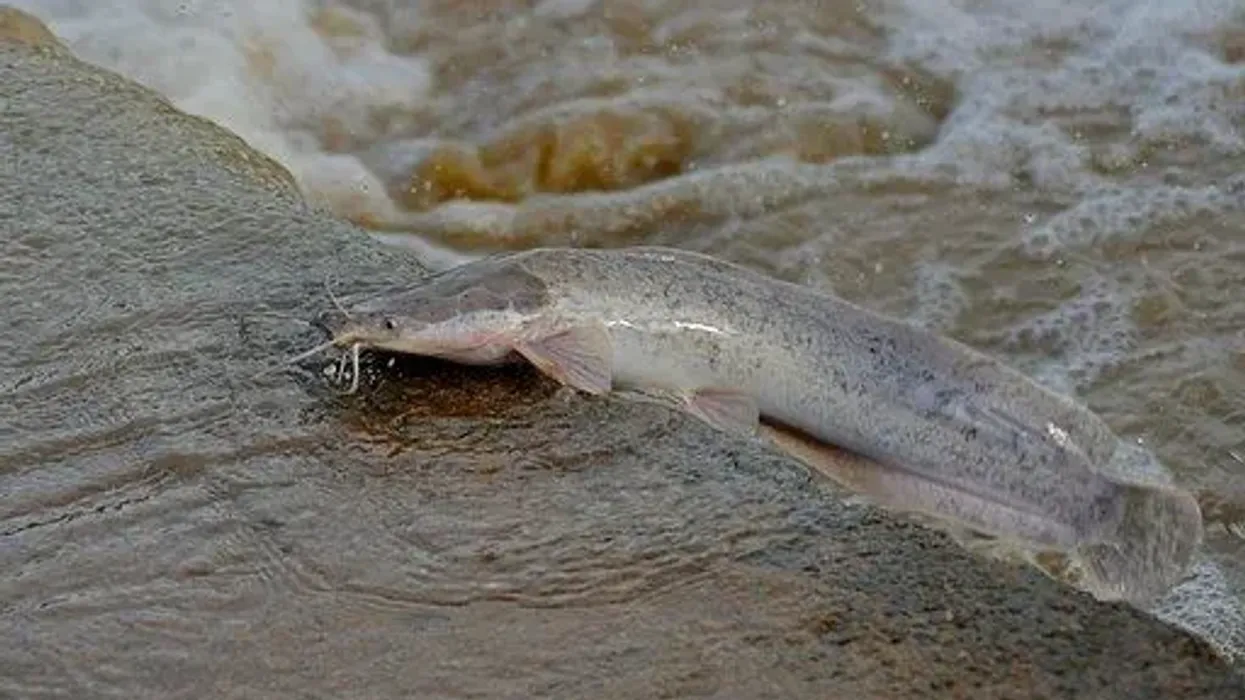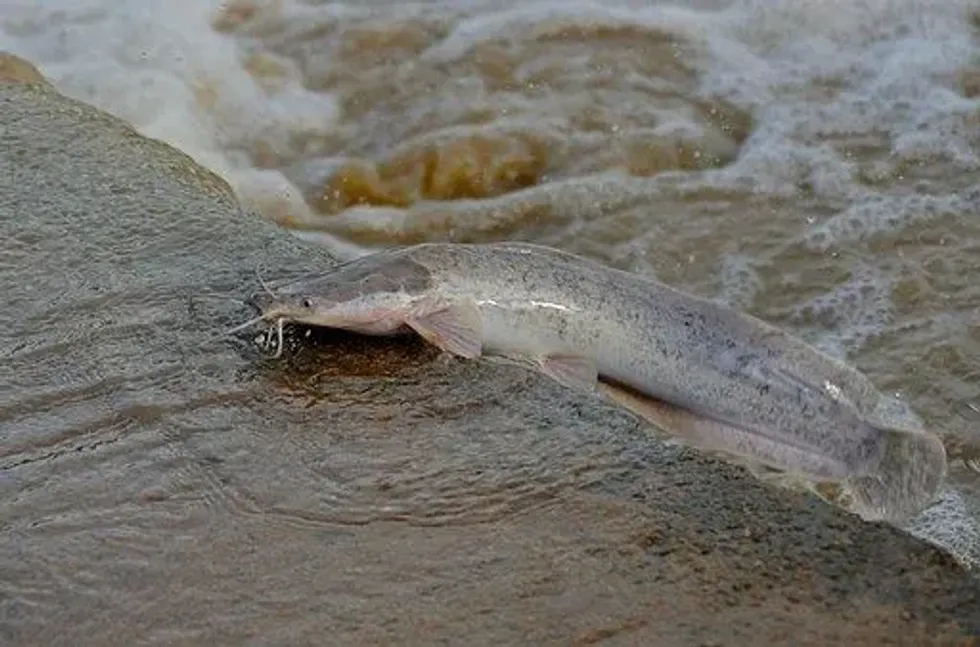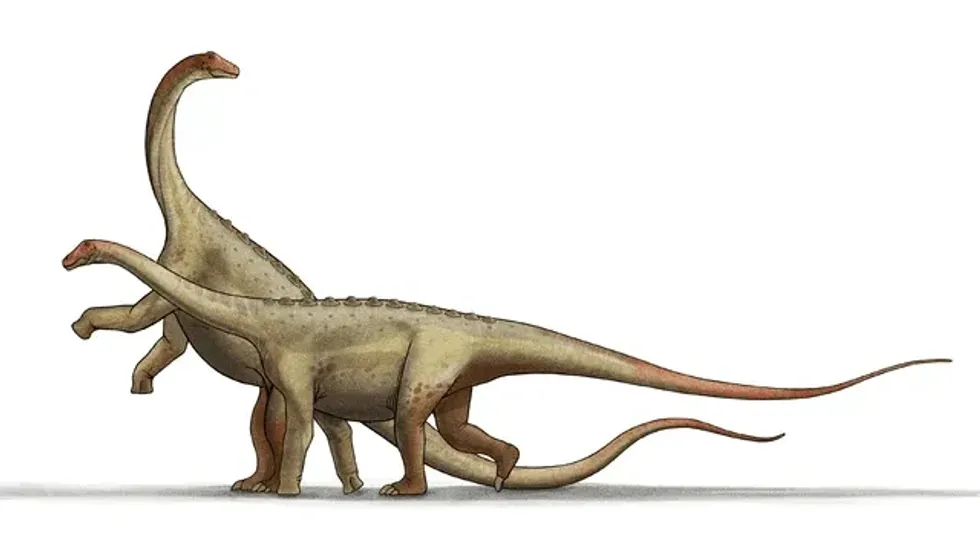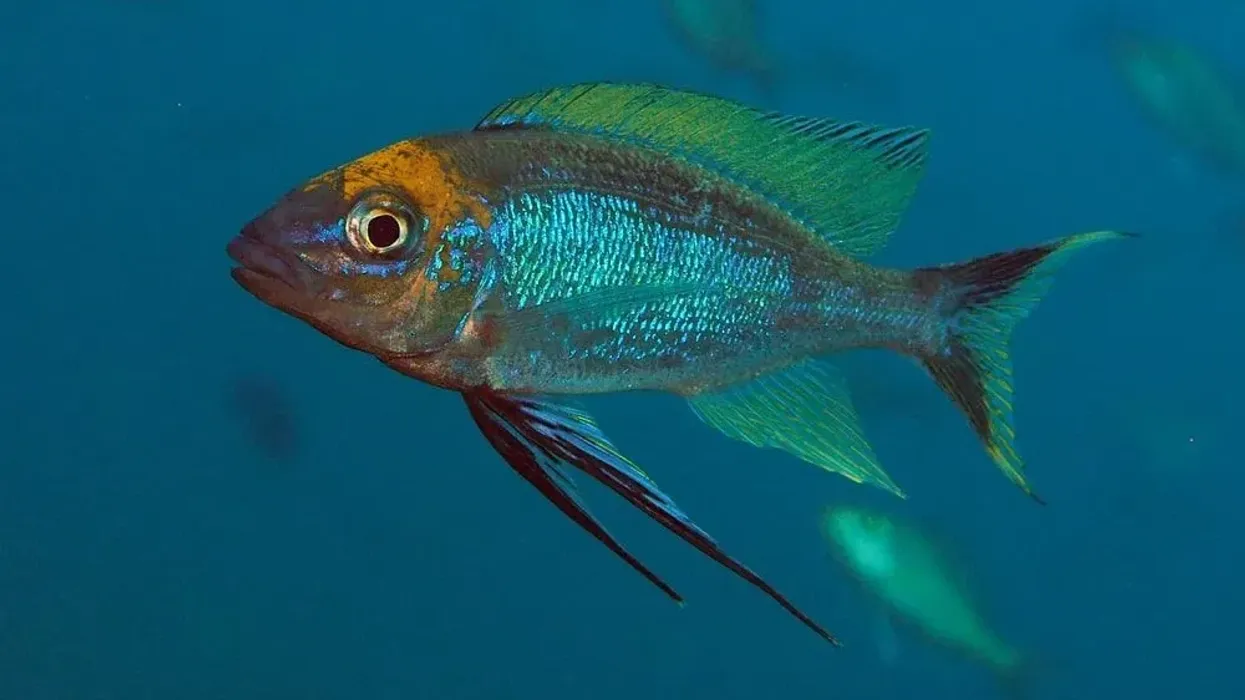There are a total of 3000 species of catfish in the world. The African catfish is one among the same family. These species are endemic to South Africa, Nigeria as well as other regions in sub-Saharan Africa and the Middle East.
Their scientific name is Clarias gariepinus or Clarias lazera. These fish are also popularly referred to as sharp tooth catfish. The African catfish (Clarias gariepinus) is an omnivorous fish and feeds on both insects and small fish as well as seeds, grains, and nuts.
The African catfish (Clarias gariepinus) is a bottom dweller in water bodies. They are sought after for their meat in the continents of Africa, the Middle East, and Asia. They are a banned fish variety in India since it poses a threat to indigenous aquatic fishes and because it's farmed illegally. In Thailand, they were introduced as farm fish.
They are airbreathing catfishes. They are nocturnal beings and also communicate via sounds, although it is inaudible to the human ear. Read on to learn more!
For more relatable content, check out our fact files on the cory catfish and channel catfish.
African Catfish Interesting Facts
What type of animal is an African catfish?
The African catfish (Clarias gariepinus) is a type of fish that belongs to the kingdom Animalia and order Siluriformes.
What class of animal does an African catfish belong to?
The African catfish (Clarias gariepinus) is a type of fish that belongs to the class Actinopterygii, family Clariidae, and genus Clarias.
How many African catfish are there in the world?
The African catfish's exact population size is not known. North African catfish were introduced illegally into Asian waters and later banned since they put other indigenous species at threat. They are freshwater fish seen in Africa, Middle East, and nearby countries.
Where does an African catfish live?
African catfish range in the ocean and any freshwater bodies like ponds, rivers, and lakes in Nigeria, Africa, South Africa, and the Middle East, and nearby countries. In Thailand, they were introduced as farm fish.
Their growth rate is high, which puts the status of other indigenous species at threat. They are also bred by catfish farmers in separate fish farming tanks.
What is an African catfish's habitat?
The African catfish habitat constitutes fisheries, freshwater bodies, and they also range in ponds, rivers, and other similar habitats. They are bottom dwellers and nocturnal beings. They do spend some time on the surface. They need appropriate water temperatures to survive.
Who do African catfish live with?
African catfish are usually spotted collectively and rarely seen alone. African catfish are largely bottom dwellers and tend to dominate the water body. They are often kept to control other aquatic species under control; however, in some instances, they can be detrimental for indigenous species. They live with other aquatic life in the water bodies.
How long does an African catfish live?
The African catfish (C gariepinus) average lifespan is eight years or more. The C gariepinus lifespan depends on their diet and habitat. The oldest fish in the world is a Greenland shark, as per records. The female Greenland shark was estimated to be around 400 years. Isn't that amazing!
How do they reproduce?
African catfish (C gariepinus) breeding occurs via spawning. They usually are seen breeding in the summer and rainy seasons. They migrate to the same flooded or shallow regions during the breeding season. Catfish eggs are laid in the vegetation underwater to prevent them from the purview of predators during the breeding season.
African catfish lay multiple rows of eggs. There is little or no involvement in raising the young. They are, in some instances, bred in fisheries as well. Artificial reproduction is possible in these species.
What is their conservation status?
The African catfish is classified as the Least Concern species by the International Union For Conservation Of Nature IUCN red list of Threatened species. Information related to other species of animals is available on the IUCN website.
African Catfish Fun Facts
What do African catfish look like?
African catfish have an elongated body with long dorsal and anal fins. Their dorsal fins have 61-80 soft rays. The dorsal fin and anal fin are long.
Their dorsal fin helps them in movement. They have wet, slimy skin. Their body is coloration is dark grey or black with cream color ventrally. They have smallish eyes with a large mouth and subterminal.
Their head seems pressed and heavily boned. The heads in adult fish species seem granulated, and males tend to be slightly larger in body size as compared to female species. This is due to sexual dimorphism.

*Please note that the main image is of a Channel catfish, not an African catfish. If you have an image of an African catfish, please let us know at hello@kidadl.com.
How cute are they?
This freshwater fish is extremely cute and adorable. They have exceptional growth rates and are usually bred to keep the growth and population of other species under control. Their growth rates in India impacted the population of indigenous species, majorly making them banned in those regions.
How do they communicate?
The African catfish fish species is an effective communicator, although it's inaudible to the human ear. They are known to make sounds using their pectoral fins.
Apart from this, they also generate electric organ discharges, although this might not be classified as communicative behavior. Fish have the ability to sense pain they also detect emotions and are easily able to recognize their owners as a pet over a period of time.
How big is an African catfish?
The African catfish is 66.9 in (1.7 m) in length, which is 50 times bigger than the pumpkinseed sunfish fish species, which is 4-6 in (0.1-0.2 m).
How fast can an African catfish swim?
African catfish swim at the bottom levels of water bodies. They seldom come to the surface of the waters. They can swim at moderate speeds. Their development is largely independent, and their development is not assisted by their parents.
How much does an African catfish weigh?
African catfish weigh 130 lb (59 kg). The heaviest catfish in the world is Pangasianodon gigas which weighs 600 lb (272.2 kg).
What are the male and female names of the species?
Male and female catfish are not addressed separately. Male fish tend to be larger as compared to female fish. This fish also differs in reproductive functions.
What would you call a baby African catfish?
A baby African catfish would be referred to as an egg initially and a fry when they grow up. The fry is not assisted by its parents, and they are usually developed independently. They are also bred by small-scale farmers in some instances.
What do they eat?
They are omnivorous fish and feed on insects and small fish as well as seeds, grains, and nuts. They are seen feeding during the daytime and are less active at night.
Feeding may occur during any time of the day and during multiple hours. They are ambush predators to smaller species of fishes that are seen feeding on them multiple times of the day.
This fish forms a protein-rich diet. It feeds on the bottom level of the water body. Owing to the nutritional value they provide, these fishes are a preferred food choice for many.
Protein is an essential part of the human diet. These fishes are not just rich in protein as well as Omega-3. The animal that are predators seen feeding such fishes include leopards, crocodiles as well as birds like hawks, eagles, and other fish-eating birds apart.
Are they dangerous?
No. these species pose no threat to humans. Their fry is seldom seen out in the open unless the fry grows up into an adult.
They pose a threat to indigenous species of fish whose population is under threat and are smaller to them and which they can prey upon. They are prone to various diseases, including bacterial infections, red spot disease, Monogenea, a skin parasite, among others. They are insensitive to diseases.
These diseases are rare in aquaculture; however, they are present. Such diseases are seen in other fish species. Fishes with diseases are considered misfit for consumption hence they might be slightly dangerous if infected.
Would they make a good pet?
The fish species, C gariepinus, is not adopted as a pet unless it's bred by farmers in a catfish farming site. Catfish farming includes raising such species in a separate habitat.
Some species of catfish are adopted by people and kept as pets. The fish species, C gariepinus, is an omnivore and survives best in its natural habitat. If you are considering adopting a catfish or any other fish as pets, you could consider smaller and more accommodative species.
Did you know...
There are over 30,000 species of fish. Apart from this, there are various fishes which haven't been discovered yet.
Most fish don't have eyelids. The only fish that can blink is a shark. Jellyfish, starfish, and crayfish aren't really fish.
Tropical fish is one of the most popular pet fish's in the United States. The catfish is the king of aquaculture. Culture fisheries are the cultivation of certain fish in order to yield produce. This is popularly called fishing culture. Fishing culture is popular among various people.
Scholarly articles related to catfish have been written titled, 'The development of the functional digestive system in the African Catfish Clarias gariepinus' (Burchell), published on the academic.edu website. It is an in-depth study about the internal organs of a fish.
A person who studies information related to fish is called an ichthyologist. They study fish in all forms of water bodies, including rivers, ponds, and other water bodies.
Vundu heterobranchus longifilis is a catfish and is also called Solomon fish found in sub-Saharan regions of Africa in ponds, rivers, and other water bodies.
Why is African catfish banned in India?
The rearing of the African catfish is banned in India. This was done primarily because it affected indigenous fish species. The Clarias species was popularly called 'Alien fish' because it was first noticed in Andhra Pradesh.
Its nearest cousin, 'Claridae' is found across freshwater lakes. They reproduce rapidly and tend to dominate the water body, putting other threatened species under threat. They were introduced in India; however, they were non-native species.
Is African catfish edible?
Yes, the African catfish is edible. The Clarias species are native to African countries, South Africa, and the Middle East. They are seldom seen in regions they are not native to unless they are raised by breeders.
They are rich in protein and Omega-3. They can be easily bought in a fish market, although the market may differ depending on the region you stay in.
If you stay in Africa or the Middle East, you are more likely to come across these species. They are bred by small-scale farmers who raise fish as well. They build small ponds to raise the same.
Here at Kidadl, we have carefully created lots of interesting family-friendly animal facts for everyone to discover! For more relatable content, check out these coconut octopus facts and giant squid facts for kids pages.
You can even occupy yourself at home by coloring in one of our free printable African catfish coloring pages.









